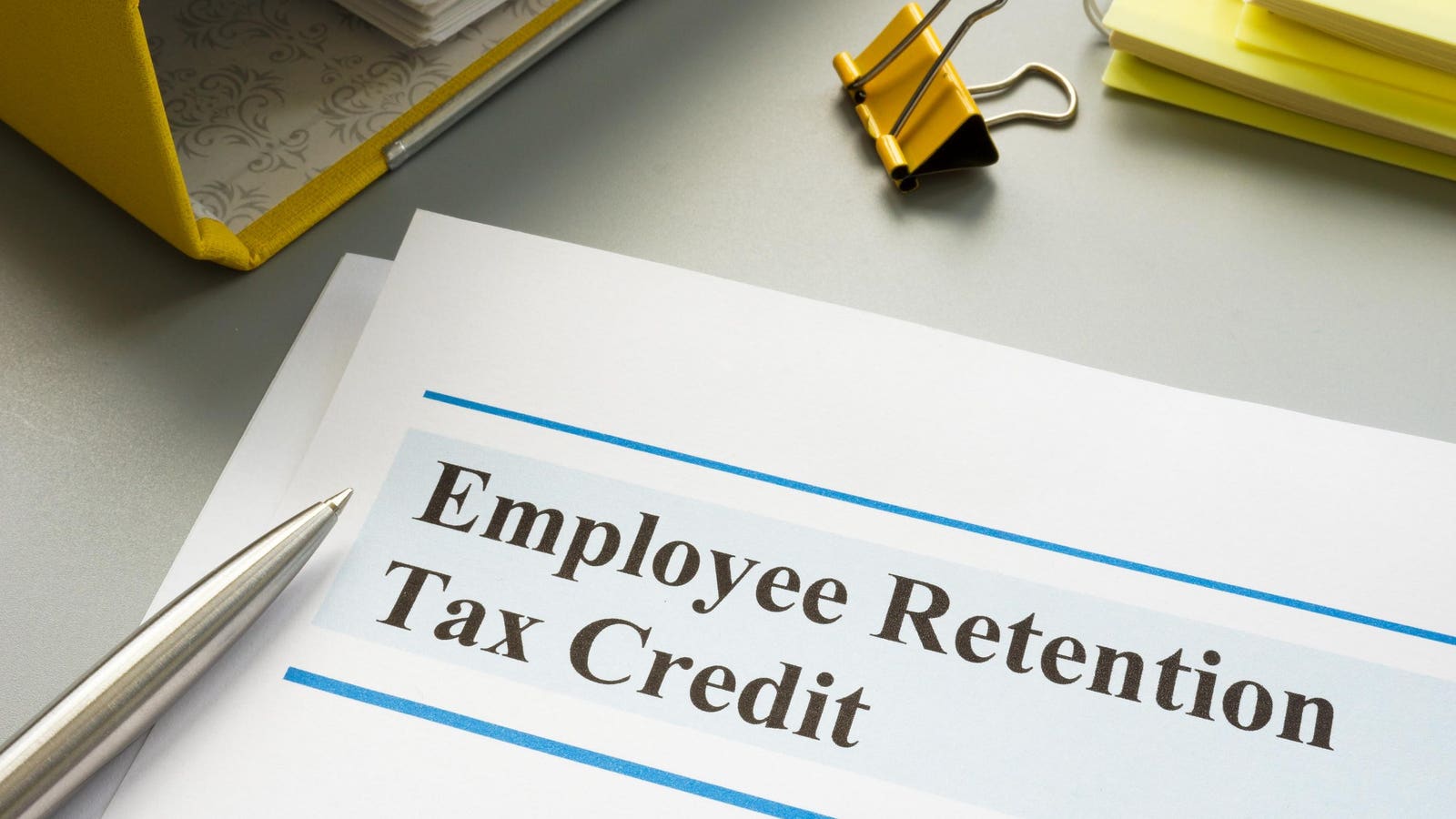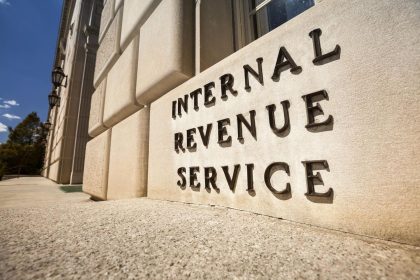Disclosure note: Chuck Rettig, former IRS commissioner and shareholder at Chamberlain Hrdlicka, provided insight and collaborated on this article.
In What’s Next For ERC Refund Claims Pending With The IRS? (“What’s Next?”) previously published on Forbes.com, I estimated that there were about 1.5 million Employee Retention Credit (ERC) refund claims pending at the IRS and shared leading practitioners’ thoughts on actions that small businesses might take to get the IRS to act on their refund claims more quickly. I predicted, though, that most small businesses are unfortunately going to have to wait quite a while longer for the IRS to process their refund claims.
Several readers called me about that article. Generally speaking, most of the callers asked what suing the IRS for their refunds would involve and how much it would cost. This article answers those types of questions.
But first I want to give an update on recent news. I reported in What’s Next that a “company recently filed a lawsuit against the IRS asking the court to require the agency to ‘resume processing new refund claims under the ERC.’” See Stenson Tamaddon, LLC v. IRS, No. 2:24-cv-01123 (D. Ariz.) The Department of Justice recently filed a brief in that case, to which it attached the declaration of Doug O’Donnell, the Deputy Commissioner of the IRS. Mr. O’Donnell had several interesting things to say about the ERC. (In the interest of full disclosure, I worked closely with Mr. O’Donnell as part of the IRS leadership team prior to my re-entering private practice.)
Mr. O’Donnell’s declaration explains the legislative history of the ERC and the IRS’ efforts to process refund claims. It reports that the IRS grew concerned about aggressive marketing and an increasing volume of claims which led it to issue the moratorium. (No surprises there.) But then Mr. O’Donnell shared a few new factoids:
· As of the week ending May 18, 2024, the inventory of unprocessed ERC refund claims stood at 1.4 million, of which 880,000 had been filed prior to the moratorium beginning on September 14, 2023.
· During the moratorium, the IRS transcribed data from the approximately 1 million paper ERC claims and analyzed the data to evaluate the risk of ineligibility. This analysis showed that potentially 60-70% of current ERC claims have an unacceptable level of risk and cannot be processed without further analysis.
Perhaps the most important piece of information to be gleaned from Mr. O’Donnell’s declaration is the IRS’ current plan for ERC refund processing:
“Knowing the significant risk of the paper claims in inventory, we will process claims that have the highest risk of ineligibility, looking on a first-in first-out basis starting with claims filed before the moratorium, by issuing notices of claim disallowance. We also will process claims that have the lowest risk of ineligibility, also looking on a first-in first-out basis starting with claims filed before the moratorium, by providing either a full allowance or a partial disallowance of the claim. The processing of those claims will occur over the summer. We expect the pace to go slowly and judiciously as we continue to refine our analytical tools.”
The IRS formalized this position in a lengthy June 21, 2024 press release which said, in part:
“[T]he IRS analysis also estimates between 60% and 70% of the claims show an unacceptable level of risk. For this category of claims with risk indicators, the IRS will be conducting additional analysis to gather more information with a goal of improving the agency’s compliance review, speeding resolution of valid claims while protecting against improper payments.
At the same time, the IRS continues to be concerned about small businesses waiting on legitimate claims, and the agency is taking more action to help. Between 10% and 20% of the ERC claims show a low risk. For those with no eligibility warning signs that were received prior to the last fall’s moratorium, the IRS will begin judiciously processing more of these claims.
The IRS anticipates some of the first payments in this group will go out later this summer. But the IRS emphasized these will go out at a dramatically slower pace than payments that went out during the pandemic period given the need for increased scrutiny.
As the additional IRS processing work begins at a measured pace, other claims will begin being paid later this summer following a final review. This additional review is needed because the submissions may have calculation errors made during the complex filings. For those claims with calculation errors, the amount claimed will be adjusted before payment.
The IRS also noted that generally the oldest claims will be worked first, and no claims submitted during the moratorium period will be processed at this time.”
There was much more in the press release, but that lengthy quote tells you most of what you need to know about the IRS’ plans. I’ll start with the good news. First, while prior IRS press releases routinely said that the ERC refund claim inventory is filled with fraudulent claims, Mr. O’Donnell did not use the word “fraud” a single time in his nine-page declaration. The press release uses the word “fraud” just once, where it reported that “IRS Criminal Investigation has initiated 450 criminal cases, with potentially fraudulent claims worth nearly $7 billion.” This may signify the IRS listened to critics (like me) that there are many nuances to the ERC and disagreements about eligibility are not “fraud” – so good for the IRS to have stopped throwing that word around.
Second, a few months ago Politico quoted IRS Commissioner Werfel as saying “that 19 out of every 20 claims is suspect,” which works out to 95%. The IRS’ more recent efforts to detect bad claims seem to have brought that percentage down to 60-70%. Reading into the IRS’ numbers suggests that the IRS has determined that 30-40% of the claims present an “acceptable” level of risk, and of that, 10-20% show a “low risk.” Those numbers are not great, but they are much better than IRS statements just a few months ago that 95% of claims are “suspect”.
What does all this mean? One takeaway is that if you filed your claim before the IRS moratorium on processing new claims started on September 14, 2023 AND the IRS believes your claim is in the 10-20% that show “low risk” the IRS will process your claim on a first in, first out basis, so the older your claim the sooner you can expect payment. (For the record, I do not understand why the IRS does not immediately issue refunds for at least the 10-20% of claims that it has determined are “low risk” and I encourage it do so.)
Another takeaway is that the IRS is not going to process claims filed after September 14, 2023 “at this time.” If you are in that group you need to be prepared for a long wait.
My third takeaway is that if you have a very old claim and the IRS does not process it in the next few months that could suggest that the IRS has found your claim presents more than a “low risk.” So again, if you are in that group be prepared for a long wait.
My final takeaway is that the IRS press release also indicated that the IRS will be denying “tens of thousands” of claims that it believes present the most risk “in the weeks ahead.” Nobody outside the IRS knows for sure, but it is certainly possible that many of the claims that the IRS is about to deny deserve to be denied. Of course, it is also certainly possible that the IRS will mistakenly deny some valid claims – perhaps a lot. That is a tricky situation which I will discuss in a separate forthcoming article.
Turning back to pending refund claims, taxpayers have a few options to try to accelerate IRS processing before taking the more drastic step of suing for a refund, as explained in What’s Next?. Unfortunately, if you cannot wait any longer for the IRS to act (or have simply run out of patience), the only option that assures quick government action is to file a refund suit. Here are some common questions and answers about what that entails.
What do I have to do before I can file a refund suit?
You must first file a claim for refund or credit with the IRS, “according to the provisions of law in that regard, and the regulations of the Secretary established in pursuance thereof.” In the vast majority of ERC refund cases, this will have been done on Form 941-X.
When can I file a refund suit?
A refund suit cannot “be begun before the expiration of 6 months from the date of filing the [refund] claim” unless the IRS denies the claim within that 6 month period in which case you can file suit immediately. In other words, you should wait at least six months from when you filed the refund claim. Given the IRS delays, this isn’t going to be an issue in most cases.
Where can I file suit?
You can file suit in one of two different federal courts. You can file in the judicial district court “where the plaintiff resides” or in the case of a corporation “in the judicial district in which is located the principal place of business or principal office or agency of the corporation.” The other option is the United States Court of Federal Claims. There are important differences between the two courts that are beyond the scope of this article, but you should make sure your lawyer considers which forum is likely to be more advantageous for you.
Who can file suit?
As a technical matter, you can do it on your own, but I would not recommend that. Ideally you would choose a reputable tax lawyer who has experience litigating federal tax refund cases in district courts and the Court of Federal Claims. This is an important distinction as most tax disputes are litigated in the United States Tax Court, so that is where most tax lawyers are used to litigating, but litigating in Tax Court is very different from refund litigation in the district courts or the Court of Federal Claims.
Some district courts require complaints to be filed by local counsel. When that is required you would ideally find someone local who is experienced in tax refund litigation. Unfortunately, that is not always possible, but whatever tax lawyer you retain should be able to find local counsel when required to assist with filing the complaint and satisfying local rules.
What if used a Professional Employer Organization (PEO) to file my refund claim?
If you used a PEO you probably know by now that the IRS will only communicate with the PEO about your refund which is just one part of a larger refund claimed by the PEO – your claim will be one of many on Schedule R of the Form 941-X filed by the PEO. I believe that notwithstanding the IRS’ decision to interface only with the PEO, businesses on whose behalf the PEO filed a refund claim would have a strong argument that they have standing and statutory authority to file suit. With that said, the law is not well developed on this point.
How do I file suit?
You file a complaint with the court and properly serve it on the government.
What happens after I file suit?
The government will usually file an answer to the complaint. At this stage, the government will typically deny most of the allegations in the complaint, or deny them for lack of sufficient knowledge to take a position. This should not worry you as it is common. In some cases, the government may file a motion to dismiss due to one or more deficiencies without even filing an answer. That is uncommon, and is cause for more concern, unless it was anticipated.
How long will this take?
The ideal outcome would be to demonstrate to the satisfaction of the government lawyer assigned to the case as quickly as possible that you are entitled to the ERC, without having to engage in cumbersome and expensive formal discovery and trial. Unfortunately, nobody can guarantee how the government will react, and it is possible that the government could, among other things, raise arguments about the merits or insist on engaging in formal discovery.
How much is this going to cost?
Early indications are that the market is still developing and fee agreements for ERC refund suits vary widely, so it may pay to shop around. Some portion of the work is predictable – if you already have a reliable well-documented ERC eligibility analysis then drafting and filing a complaint and meeting with government lawyers should not take more than a few dozen hours. In those cases, you can get an idea of a fair cost by multiplying that range of hours by the lawyer’s hourly rate. Unfortunately, every case is different, and the lawyer may have to do more – perhaps much more – than the bare minimum in any given case. Much of that will depend on how the government reacts, which may be out of your lawyer’s control.
If I win can I get the government to pay my lawyer fees?
Taxpayers can recover attorney fees (usually capped at certain rates) and costs, but there are many limitations. The most notable limitations are that the taxpayer’s net worth cannot exceed certain amounts and an award will not be made if the government’s position was substantially justified.
The net worth requirement does not apply to tax exempt entities, but otherwise fee recoveries are limited to parties who are “(i) an individual whose net worth did not exceed $2,000,000 at the time the civil action was filed, or (ii) any owner of an unincorporated business, or any partnership, corporation, association, unit of local government, or organization, the net worth of which did not exceed $7,000,000 at the time the civil action was filed, and which had not more than 500 employees at the time the civil action was filed.”
There are many nuances and sub-issues to fee awards that are best discussed with your tax lawyer.
Is there anything else I should know?
Litigation is unpredictable, can be expensive, and should never be your first choice. Unfortunately, the IRS’ inaction is forcing many taxpayers who have no desire to litigate to consider exactly that. Go into it with your eyes open and have a plan to get resolution as quickly as possible.
Tom Cullinan, a shareholder in Chamberlain Hrdlicka’s Atlanta office, served as Counselor to the IRS Commissioner from 2018 to 2022, from 2018 to 2022 and acting IRS Chief of Staff for nine months in 2022.
Read the full article here






